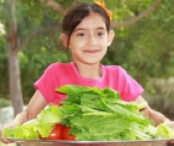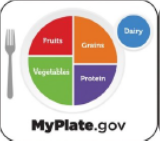Back-to-School Lunches and Snacks
By: Sheila Beckley, CSU Family and Consumer Science Extension Agent – Weld County
As a mom of a first grader, I understand the challenge of always coming up with appealing snack and lunch ideas. My child has a wide range of foods he likes, but he gets tired of foods very quickly. More than anything, he likes variety and novelty. However, some parents may experience the opposite challenge. Some children prefer a limited variety and are hesitant to try new foods. To help your child accept and enjoy a variety of foods and to be sure they are getting the nutrition they need, consider these tips for planning and preparing your child’s lunch and snack:
Tips for Nutritious Lunches and Snacks:
- Encourage your child to help, from planning, grocery shopping, to preparing the food. Children will appreciate the food better if they have a hand in the process. It will also help them to learn independence
- Create snack stations in the cabinet or in the refrigerator made up of healthy snacks such as whole fruits, cut veggies, granola bars, cheese sticks, yogurt cups, or whole grain crackers. Allow your child to pick from the selection.
- Always check the label on packaged items for nutrition information.
- *Choose snacks that have more vitamins and minerals and at least 2 grams of fiber per serving.
- *Limit snacks that have more than 10% DV of saturated fat, sodium and added sugars per serving.
- Include a total of two to three vegetables or fruits in their lunch and snacks daily, and switch it up to include a variety of options during the week.
- Add nuts to snacks or lunch for protein, fiber, and healthy fat.
- Choose healthy dips for vegetable sticks such as peanut butter, guacamole, or hummus.
- Swap out chips for lightly salted popcorn.
- Encourage water or milk most of the time rather than juice or sweetened beverages.
- To prevent sandwiches from getting soggy, do not place wet ingredients such as tomato slices against the bread. Instead, place a cheese slice or dry lettuce leaf against the bread. A spread like mayonnaise, margarine or hummus can also prevent the bread from getting soggy. Place the sandwich in a sealed sandwich bag or a reusable food container to keep the bread from drying out.
- Watch a demonstration on packing a lunch box and several sandwich recipe ideas in this video.
Tips to Keep Your Child’s Lunches and Snacks Safe:
- Always wash fruits and vegetables thoroughly under running water.
- *Drain and pat dry fruits and vegetables well before packing.
- Keep food out of the temperature danger zone (40 – 140F) where harmful bacteria grow.
- *Use two freezer gel packs, around 4 x 6 inches, and an insulated lunch bag to keep foods cool and food safe. You can also use a frozen 100% fruit juice box (no sugar added) or water bottle or a frozen fruit cup (no sugar added) as an alternative to one of the freezer gel packs.
- *If you’re packing hot food, use an insulated food container. Pour boiling water into the container, put the lid on, let stand for a few minutes, empty it out, then put in the piping hot food. Tell your child not to open the container until lunch time to keep it above 140F.
Let’s Talk
When children are helping with food shopping, preparing or packing, find out what they know about healthy eating. Ask them questions. Listen to their answers. Gently correct any misunderstandings. Explain that foods from each of the food groups (fruits, vegetables, grains, protein and dairy or fortified alternatives) provide their body with a different mix of nutrients that keep their body working well. Talk about the importance of eating a variety of foods each day. Make it clear that good food helps them grow, gives them energy to run, play and learn.
For more information about specific foods and their serving sizes, visit the MyPlate website.
Recipe for Health
Rotisserie Chicken Sub
- 1 Sandwich roll, sliced horizontally
- 2 slices cheese
- 1 Tablespoon mayonnaise
- Thinly sliced rotisserie chicken, around 1/2 cup
- Optional toppings: thinly sliced tomatoes, shredded lettuce or baby spinach, etc.
Directions
- Spread ½ of the mayonnaise on each half of the roll.
- Build your sandwich from the bottom up in this order: cheese, chicken, tomatoes, then lettuce or spinach (if using).
- Place the top of the roll on the lettuce, cut side down.
- Cut sandwich in half, and wrap or place in a reusable airtight container.









